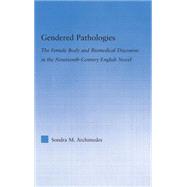Gendered Pathologies: The Female Body and Biomedical Discourse in the Nineteenth-Century English Novel
, by Archimedes; Sondra M.- ISBN: 9780415975261 | 0415975263
- Cover: Hardcover
- Copyright: 9/8/2005
Gendered Pathologiesexamines nineteenth-century literary representations of the pathologized female body in relation to biomedical discourses about gender and society in Victorian England. According to medical and scientific views of the period, the woman who did not conform to the dictates of gender ideology was, biologically speaking, aberrant: a deviation from the norm. Yet, although marginalized in a social sense, the "deviant" woman was central as a literary and cultural trope. Analyzing novels by Charles Dickens, H. Rider Haggard, and Thomas Hardy alongside Foucault's notion of perverse sexualities and Herbert Spencer's model of the social organism, Archimedes argues that the pathologized female body displaces or resolves, on a narrative level, larger cultural anxieties about the health of the British as a species. While earlier feminist investigations asserted that bourgeois ideology helped to construct scientific discourses about female sexuality and social behavior, my study takes theseassertions as a starting point incest, racial stereotyping, and neurasthenia,Gendered Pathologiesattempts to shed light on the way in which biological thinking permeated British culture in the second half of the nineteenth century.






